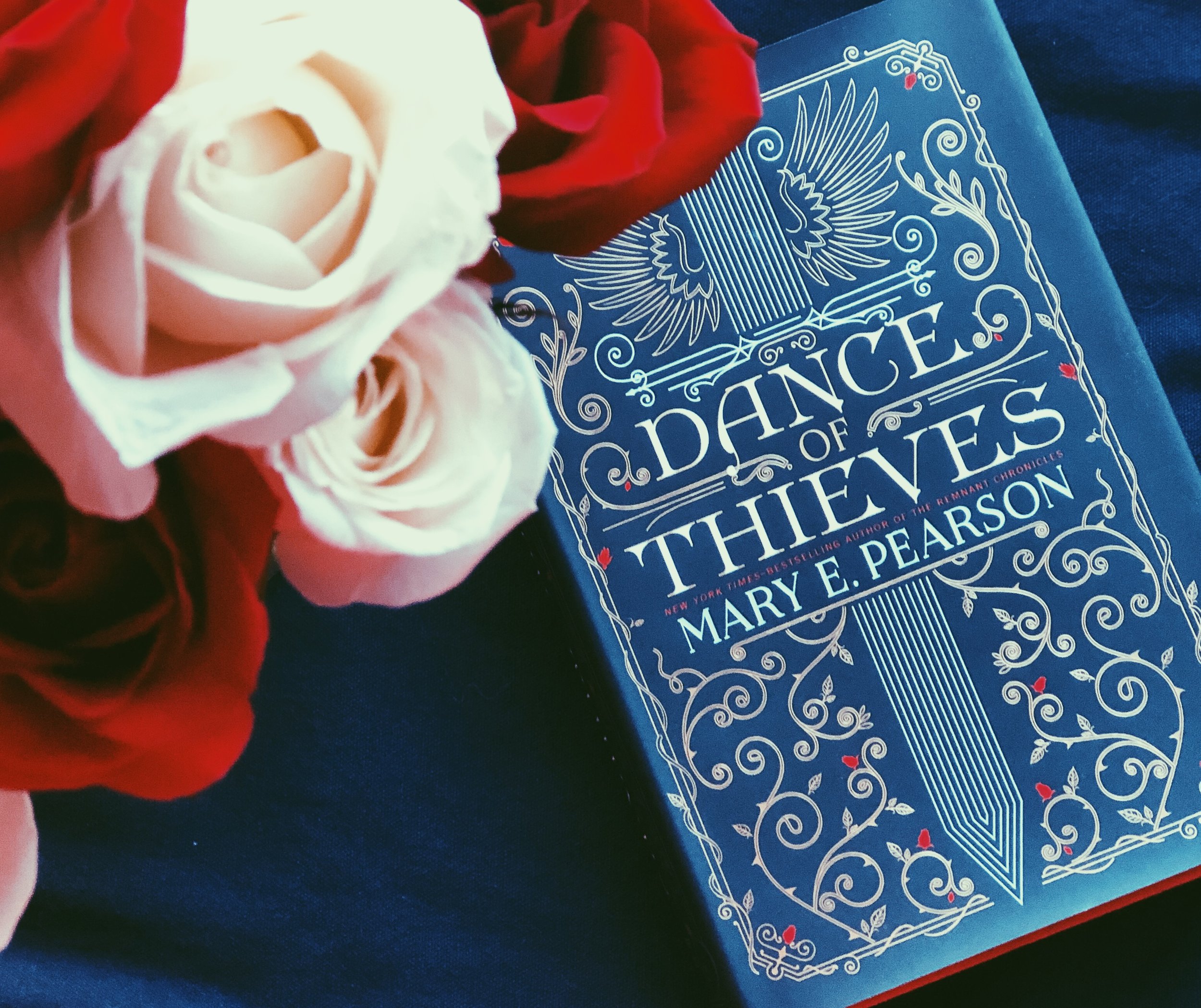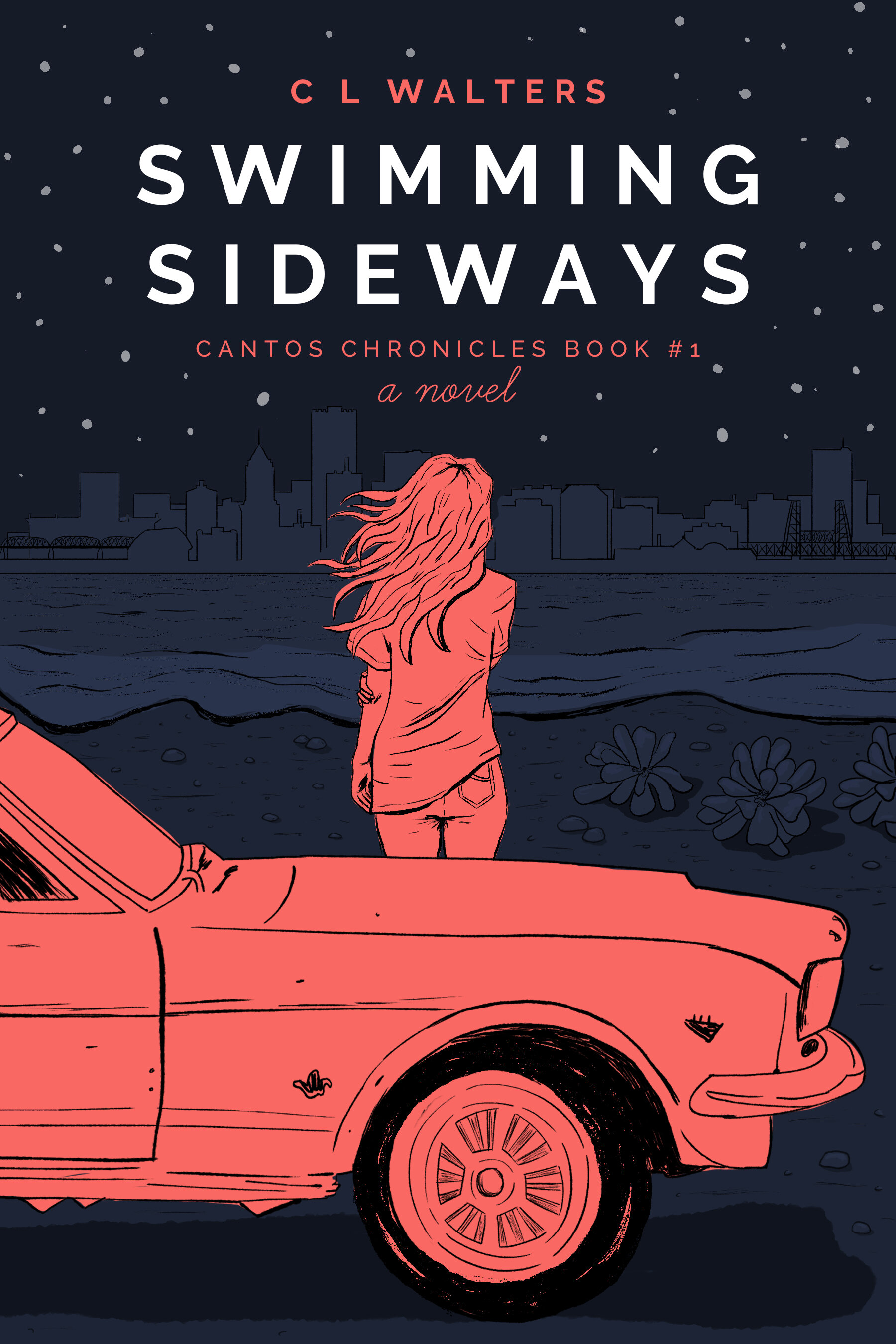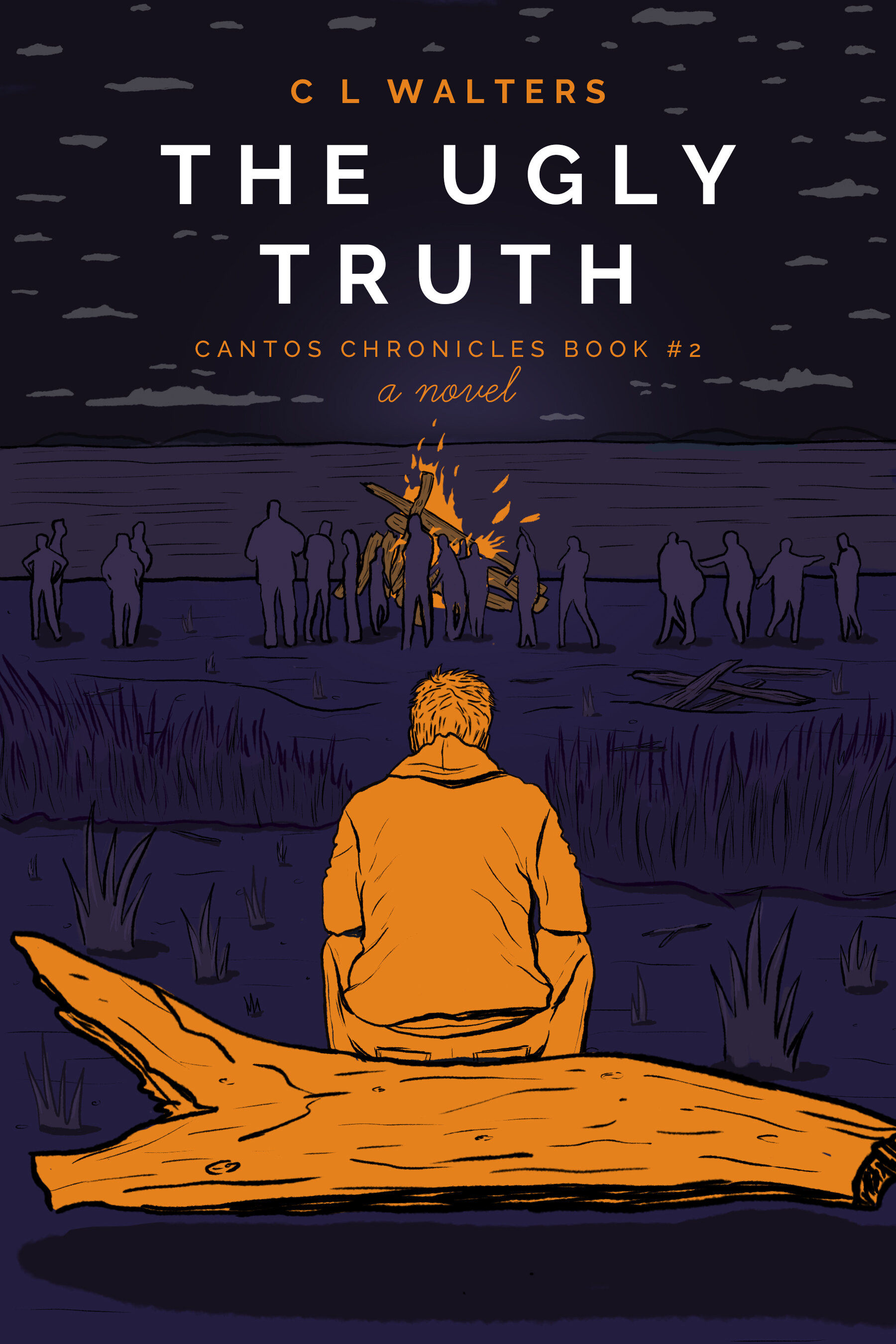If I thought I didn’t know if I was coming or going last week, this week it’s all about staying put. I’ve had to park it. At home. Social Distancing. And with no end in site, it makes me wonder what’s to come? Well, hopefully I’ll offer some interesting content. Here’s a vlog brought to you from the inside of my bathroom (LOL) as I reflect about this week.
In the grand scheme of my Independent Author Book Marketing road trip, the vehicle sort of stalled on the side of the road. I got pulled over by the police and escorted to the next motel where I’ve been directed to hang out for the next couple of weeks. Do not pass go. Do not collect $200. Great. What does this mean for book marketing? Long term, I don’t know. My events might be shot. Short term, I’ve got Social Media.
One of the things I mention in the vlog was publishing the Book Playlists on Instagram for each of the books in The Cantos Chronicles. One of the biggest necessities of marketing is identifying the target audience. As a YA Writer, I’m speaking to teens, specifically 16-18 year olds (though I’m beginning to wonder since my books seem to have a crossover adult appeal. This begs the question: am I marketing to the correct audience?) Since art of all kinds speaks so loudly to me, and every teen I have known speaks music, I decided a playlist might be a solid interactive experience).
I’ve begun to consider that this isn’t a short term game, but a long one. I’m in the process of building a relationship with readers. That’s going to take time and consistency. So while we might be “In the Wait” (Oh hey, head over to Wattpad to read those short vignettes if you’re interested in them), I need to continue to be vigilant in offering the strongest content I can to showcase who I am as a writer and as a person.
Rerelease day for The Cantos Chronicles is right around the corner (March 31, 2020) though they are available for PreOrder. Two more weeks!
Next Week: Indie Author Marketing: Update No. 8
-
January 2025
- Jan 17, 2025 Bring Back the Dystopian Craze of 2012 Jan 17, 2025
-
July 2024
- Jul 15, 2024 Imposter Syndrome: Tools for Authenticty Jul 15, 2024
-
June 2024
- Jun 1, 2024 June Read Along: In the Echo of this Ghost Town Jun 1, 2024
-
March 2024
- Mar 25, 2024 New Post on SubStack tomorrow! Mar 25, 2024
- Mar 1, 2024 March Read Along: The Bone of Who We Are Mar 1, 2024
-
January 2024
- Jan 31, 2024 February Read Along: The Ugly Truth Jan 31, 2024
-
December 2023
- Dec 28, 2023 2024: Year of the Read Along Dec 28, 2023
-
October 2023
- Oct 25, 2023 Unhealthy Relationships and Romance Books Oct 25, 2023
- Oct 25, 2023 Relationships: Isolation versus Autonomy Oct 25, 2023
- Oct 22, 2023 Unhealthy Relationships: The Love Bomb Oct 22, 2023
- Oct 22, 2023 Healthy Relationships: Hindsight is 20/20 Oct 22, 2023
- Oct 22, 2023 Relationships: Beware Gaslighting Oct 22, 2023
-
August 2023
- Aug 26, 2023 Blog Moved to Substack Aug 26, 2023
-
July 2023
- Jul 31, 2023 The Trials of Imogene Sol: The Allies Jul 31, 2023
- Jul 13, 2023 Foundational Books & Book Bans Jul 13, 2023
- Jul 5, 2023 Tropes: Found Family Jul 5, 2023
-
June 2023
- Jun 21, 2023 3 Things I Learned About Reading Space Opera Jun 21, 2023
-
May 2023
- May 24, 2023 The Dangers of Myopic Reading May 24, 2023
- May 17, 2023 My Trek...Journey...Quest to O'ahu Independent Bookstores May 17, 2023
- May 10, 2023 My Life as an Alien Invader May 10, 2023
- May 3, 2023 How I Got to Hawaiʻi, My Hawaiʻi Story May 3, 2023
-
April 2023
- Apr 26, 2023 You Can Go Home Again Apr 26, 2023
-
March 2023
- Mar 29, 2023 Cantos Love: Happy Anniversary! Mar 29, 2023
- Mar 22, 2023 Cantos Love: Gabe Mar 22, 2023
- Mar 15, 2023 Cantos Love: Seth Mar 15, 2023
- Mar 8, 2023 Cantos Love: How They Came to Be Mar 8, 2023
- Mar 1, 2023 Cantos Love: A Month of Cantos Mar 1, 2023
-
January 2023
- Jan 25, 2023 The Letters She Left Behind, 3 Years. Jan 25, 2023
- Jan 18, 2023 Behind-the Scenes: The Trials of Imogene Sol Jan 18, 2023
- Jan 11, 2023 Behind-the-Scenes: Reading & All My Rage Jan 11, 2023
-
November 2022
- Nov 16, 2022 Book Hangover List Nov 16, 2022
- Nov 9, 2022 Advice: Find your People Nov 9, 2022
-
October 2022
- Oct 26, 2022 Contest Awarded Short Story: The Invalid Oct 26, 2022
- Oct 13, 2022 The WHY Behind The Messy Truth About Love Oct 13, 2022
-
June 2022
- Jun 27, 2022 4 Things You Should Know about The Messy Truth About Love Before Reading Jun 27, 2022
-
February 2022
- Feb 2, 2022 February Ideals: Dreaming Feb 2, 2022
-
December 2021
- Dec 22, 2021 My Top 10 Songs (w/Lyrics) 2021 Dec 22, 2021
- Dec 15, 2021 My Top 5 Characters I've Written Dec 15, 2021
- Dec 1, 2021 My Top 5 of My Own Books Dec 1, 2021
-
September 2021
- Sep 29, 2021 Road to Echoes: Griffin on Facing Fear Sep 29, 2021
- Sep 8, 2021 Road to Echoes: Attraction Sep 8, 2021
- Sep 1, 2021 Road to Echoes: 8 Tips for Using NaNoWriMo to Write Your Novel Sep 1, 2021
-
August 2021
- Aug 25, 2021 Road to Echoes: 4 Lessons I Learned Writing Maxwell Wallace Aug 25, 2021
- Aug 18, 2021 Road to Echoes: Tropes Aug 18, 2021
- Aug 11, 2021 The Road to Echoes: Loud Characters Aug 11, 2021
- Aug 4, 2021 The Road to Echoes: Putting the Story Together Aug 4, 2021
-
July 2021
- Jul 28, 2021 The Road to Echoes: Research to Understand Griffin Jul 28, 2021
- Jul 21, 2021 The Road to Echoes: Secondary Characters Primer Jul 21, 2021
- Jul 14, 2021 The Road to Echoes: Writing Difficult Characters Jul 14, 2021
- Jul 7, 2021 The Road of Echoes: What Inspired Griffin's Story? Jul 7, 2021
-
June 2021
- Jun 30, 2021 The Road of Echoes: New Blog Series Jun 30, 2021
-
May 2021
- May 26, 2021 Favorite Reads of 2021 So Far May 26, 2021
- May 19, 2021 Cover Love May 19, 2021
- May 12, 2021 Writing Limbo May 12, 2021
- May 5, 2021 Writing In Between May 5, 2021
-
April 2021
- Apr 28, 2021 April Challenge: Update No. 4 Apr 28, 2021
- Apr 21, 2021 April Challenge: Update No. 3 Apr 21, 2021
- Apr 14, 2021 April Challenge: Update No. 2 Apr 14, 2021
- Apr 7, 2021 April Challenge: Update No. 1 Apr 7, 2021
-
March 2021
- Mar 31, 2021 April Challenge: Finishing the Draft Mar 31, 2021
-
February 2021
- Feb 24, 2021 Character Speaks: Dear Paola, from Gabe Feb 24, 2021
- Feb 17, 2021 Character Speaks: Dear Sam, from Seth Feb 17, 2021
- Feb 10, 2021 Ask the Author: Advice for Newbie Writers? Feb 10, 2021
- Feb 3, 2021 Ask the Author: What motivates you to write? Feb 3, 2021
-
January 2021
- Jan 27, 2021 Ask the Author: Series or Stand Alone? Jan 27, 2021
- Jan 20, 2021 Ask the Author: Why did you choose to write YA? (Part 2) Jan 20, 2021
- Jan 13, 2021 Ask the Author: Why did you choose to write YA? Jan 13, 2021
- Jan 6, 2021 Ask the Author: Favorite Part of the Writing Process? Jan 6, 2021
-
October 2020
- Oct 16, 2020 Rainy Day Collective Podcast & Purity Culture Oct 16, 2020
- Oct 14, 2020 The Stories Stars Tell: It's Here! Oct 14, 2020
- Oct 1, 2020 The Stories Stars Tell: Author's Note Oct 1, 2020
-
September 2020
- Sep 30, 2020 The Stories Stars Tell: Tanner and Griffin Origin Sep 30, 2020
- Sep 23, 2020 The Stories Stars Tell: A Letter from Emma Matthews Sep 23, 2020
- Sep 16, 2020 The Stories Stars Tell: Guest Blogger, Tanner James & Brotherhood Sep 16, 2020
- Sep 9, 2020 The Stories Stars Tell: Tanner and the Bro Code Sep 9, 2020
- Sep 2, 2020 The Stories Stars Tell: Emma, Ginny, Liam and Ferris Bueller Sep 2, 2020
-
August 2020
- Aug 26, 2020 The Stories Stars Tell: Guest Blogger, Liam Quinn Aug 26, 2020
- Aug 19, 2020 The Stories Stars Tell: Guest Blogger, Ginny Donnelly Aug 19, 2020
- Aug 12, 2020 The Stories Stars Tell: Guest Blogger, Emma Matthews Aug 12, 2020
-
July 2020
- Jul 1, 2020 Interview: Lauren-Marie with The Indigo Book Jul 1, 2020
-
June 2020
- Jun 24, 2020 This-Then-That: YA Dystopian and SciFi Edition Jun 24, 2020
- Jun 17, 2020 This-Then-That: YA Contemporary Edition Jun 17, 2020
- Jun 10, 2020 This-Then-That: YA Fantasy Edition Jun 10, 2020
-
May 2020
- May 27, 2020 Reading Wonderland Interview: Piper Bee May 27, 2020
- May 20, 2020 Reading Wonderland Interview: Nancy Richardson Fischer May 20, 2020
- May 13, 2020 Reading Wonderland Interview: Rob Rufus May 13, 2020
- May 6, 2020 Reading Wonderland Interview: Lisa Brown Roberts May 6, 2020
-
April 2020
- Apr 29, 2020 Reading Wonderland: an Introduction Apr 29, 2020
- Apr 22, 2020 Quarantine: 37 Days Apr 22, 2020
-
March 2020
- Mar 31, 2020 Indie Author Marketing: Road Trip Wrap Up Mar 31, 2020
- Mar 25, 2020 Indie Author Marketing: Update No. 8 Mar 25, 2020
- Mar 18, 2020 Indie Author Marketing: Update No. 7 Mar 18, 2020
- Mar 11, 2020 Indie Author Marketing: Update No. 6 Mar 11, 2020
-
February 2020
- Feb 29, 2020 Indie Author Marketing: Update No. 5 Feb 29, 2020
- Feb 24, 2020 Indie Author Marketing: Update No. 4 Feb 24, 2020
- Feb 19, 2020 Indie Author Marketing: Update No. 3 Feb 19, 2020
- Feb 12, 2020 Indie Author Marketing: Update No. 2 Feb 12, 2020
- Feb 4, 2020 Indie Author Marketing: Update No. 1 Feb 4, 2020
-
January 2020
- Jan 29, 2020 Indie Author Marketing: A Hope and A Dream Jan 29, 2020
- Jan 15, 2020 The Letters She Left Behind: It's here! Jan 15, 2020
-
December 2019
- Dec 18, 2019 The Letters She Left Behind: Character Interview Dec 18, 2019
- Dec 11, 2019 The Letters She Left Behind: Annotated Playlist Dec 11, 2019
-
October 2019
- Oct 16, 2019 Awesome Writer Spotlight: Mary E. Pearson (again) Oct 16, 2019
- Oct 7, 2019 The Bones of Who We Are: Gratitude Oct 7, 2019
-
September 2019
- Sep 30, 2019 The Bones of Who We Are: It's time. Sep 30, 2019
- Sep 16, 2019 The Bones of Who We Are: A Difficult Story Sep 16, 2019
- Sep 9, 2019 The Bones of Who We Are: Journey to Gabe Sep 9, 2019
- Sep 2, 2019 The Bones of Who We Are: Musical Playlist Sep 2, 2019
-
August 2019
- Aug 19, 2019 The Bones of Who We Are: The Monster Aug 19, 2019
- Aug 12, 2019 The Bones of Who We Are: Gabe Facts Aug 12, 2019
- Aug 5, 2019 The Bones of Who We Are: Hero Aug 5, 2019
-
July 2019
- Jul 29, 2019 The Bones of Who We Are: Teens & Depression Jul 29, 2019
- Jul 22, 2019 The Bones of Who We Are: Love Jul 22, 2019
- Jul 15, 2019 The Bones of Who We Are: The Change Jul 15, 2019
- Jul 8, 2019 The Bones of Who We Are: Aesthetic Jul 8, 2019
-
May 2019
- May 26, 2019 Time Away May 26, 2019
- May 20, 2019 Writing Inspiration: Music May 20, 2019
- May 13, 2019 Awesome Writer Spotlight: Mary E. Pearson May 13, 2019
- May 6, 2019 Happy Book Birthday: A Character Interview May 6, 2019
- May 1, 2019 The Letters She Left Behind PLAYLIST May 1, 2019
-
April 2019
- Apr 29, 2019 YA Author Series - Author Spotlight: Genevieve Jane Apr 29, 2019
- Apr 15, 2019 YA Author Series - Author Spotlight: M. Wednesday Apr 15, 2019
- Apr 8, 2019 YA Author Series - Author Spotlight: Leslie Arambula Apr 8, 2019
- Apr 1, 2019 YA Author Series - Author Spotlight: Alison Aldridge Apr 1, 2019
-
March 2019
- Mar 25, 2019 YA Author Series Launch: CL Walters Mar 25, 2019
- Mar 18, 2019 #momlife, #writerslife Mar 18, 2019
- Mar 12, 2019 Book Mash-Up Fun Mar 12, 2019
- Mar 4, 2019 Snappy Dialogue in 3 Minutes Mar 4, 2019
-
February 2019
- Feb 25, 2019 Pacing the Narrative: A New Tool Feb 25, 2019
- Feb 18, 2019 Character and Conflict Part2: Motivation Feb 18, 2019
- Feb 11, 2019 Character and Conflict, part one: Types of Conflict Feb 11, 2019
- Feb 4, 2019 Point of View and Writing Feb 4, 2019
-
January 2019
- Jan 28, 2019 Off to Refill the Well . . . Jan 28, 2019
- Jan 21, 2019 Character-Driven or Plot Driven Narrative? Jan 21, 2019
- Jan 14, 2019 Character: Conversations Jan 14, 2019
-
December 2018
- Dec 3, 2018 The Ugly Truth: Cover Reveal and Playlist Dec 3, 2018
-
October 2018
- Oct 29, 2018 This Writer Reads Oct 29, 2018
- Oct 15, 2018 Swimming Sideways: A Letter to Readers Oct 15, 2018
- Oct 8, 2018 Empathy is Our Superpower! Oct 8, 2018
- Oct 4, 2018 The Writer Hoard Oct 4, 2018
- Oct 1, 2018 Swimming Sideways Play List Oct 1, 2018
-
September 2018
- Sep 28, 2018 Hero's Journey: Jane and New Found Freedom Sep 28, 2018
- Sep 25, 2018 Hero's Journey: Jane and the Final Battle Sep 25, 2018
- Sep 22, 2018 Hero's Journey: Jane and Her Road Back Sep 22, 2018
- Sep 19, 2018 Hero's Journey: Jane's Dark Night of the Soul Sep 19, 2018
- Sep 16, 2018 Hero's Journey: Jane's Road of Trials Sep 16, 2018
- Sep 13, 2018 Hero's Journey: Jane Crosses the Threshold Sep 13, 2018
- Sep 10, 2018 Hero's Journey: Jane Goes on an Adventure Sep 10, 2018
- Sep 7, 2018 Hero's Journey: Ordinary Jane Sep 7, 2018















